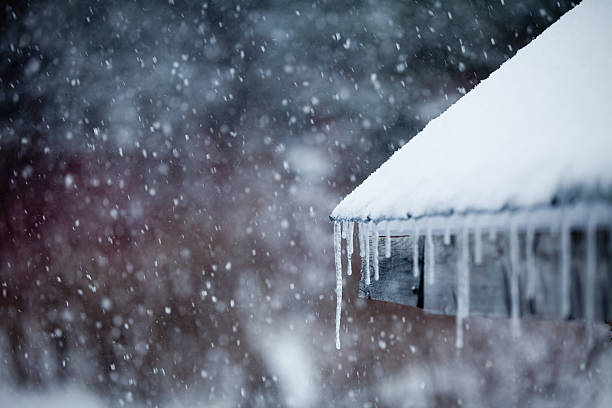Avoiding the Top Winter Insurance Claims

Home insurance during the winter typically covers a range of risks associated with cold weather and its potential hazards. This includes protection against damage caused by extreme weather conditions such as snowstorms, heavy winds, and freezing temperatures. Policies often cover structural damage to the home itself, including roofs, walls, and windows, as well as any detached structures like garages or sheds. Additionally, home insurance commonly includes coverage for personal belongings affected by winter-related incidents, such as burst pipes, ice dams, or accidental fires from heating systems. Liability coverage is also a crucial component, safeguarding homeowners in case someone is injured on their property due to winter conditions.
Understanding the most common winter home insurance claims and taking proactive steps can help you safeguard your property and potentially avoid costly damage. Here’s a closer look at some of the typical winter-related risks and practical tips on how to mitigate them:
1. Frozen Pipes and Water Damage
One of the most frequent winter claims involves burst pipes due to freezing temperatures. When water inside pipes freezes, it expands, leading to cracks or bursts that can cause extensive water damage once the ice thaws.
- Insulate pipes: Use insulation sleeves or wrapping to protect exposed pipes in unheated areas like attics, basements, and crawl spaces.
- Keep heat on: Maintain a consistent temperature in your home, even when you’re away, to prevent pipes from freezing.
- Let faucets drip: Allow faucets connected to vulnerable pipes to drip slightly to relieve pressure and prevent freezing.
- Open cabinet doors: Open cabinet doors under sinks to allow warm air to circulate around pipes.
- Disconnect hoses: Disconnect outdoor hoses and drain water from outdoor pipes and faucets before winter sets in.
- Close garage doors: Keep garage doors closed if there are water supply lines in the garage.
- Monitor temperature: Use a temperature monitoring device to keep track of temperatures in vulnerable areas.
2. Roof Damage
Heavy snow accumulation, ice dams, and freezing temperatures can all contribute to roof damage during winter. This can range from leaks to roof collapse under extreme conditions.
- Inspect and repair roof: Before winter, inspect the roof for any existing damage such as loose or missing shingles, cracks, or leaks. Repair any issues promptly.
- Clean gutters: Ensure gutters and downspouts are clear of debris such as leaves and twigs to prevent ice dams from forming.
- Trim overhanging branches: Trim back any tree branches that overhang the roof to prevent them from potentially falling and damaging the roof during heavy snow or ice storms.
- Remove snow promptly: Use a roof rake to safely remove snow from the roof after heavy snowfalls, especially if the snow buildup is significant.
- Prevent ice dams: Ensure proper attic insulation and ventilation to prevent heat from escaping and causing ice dams. Use ice melt products or heated cables if ice dams start to form.
- Check for attic leaks: Inspect the attic for any signs of leaks or water stains, as these can indicate roof damage or ice dam issues.
Monitor for signs of stress: Keep an eye out for any signs of stress on the roof such as sagging, especially after heavy snowfalls.
3. Fire Hazards
As temperatures drop, many homeowners turn to alternative heating sources such as space heaters and fireplaces. Improper use or maintenance of these can increase the risk of fires.
- Space Heaters: Keep space heaters at least three feet away from anything flammable and never leave them unattended.
- Fireplaces: Have your chimney inspected and cleaned annually to prevent chimney fires.
- Carbon Monoxide Detectors: Install and regularly test carbon monoxide detectors, especially if you use fuel-burning appliances.
5. Liability Claims
Slips and falls on icy driveways or sidewalks can lead to liability claims if someone is injured on your property.
- Snow and Ice Removal: Keep driveways, walkways, and sidewalks clear of snow and ice promptly after snowfalls.
- Communicate Hazards: Use signs or barriers to warn of dangerous conditions such as falling icicles or slippery surfaces.
- Maintain Outdoor Areas: Repair and maintain outdoor fixtures and structures to prevent accidents.
Being proactive about winter home maintenance and safety can significantly reduce the likelihood of experiencing common winter-related insurance claims. By taking preventive measures such as insulating pipes, maintaining your roof, practicing safe heating habits, and keeping walkways clear, you can protect your home and potentially save yourself from the stress and expense of dealing with winter-related damage. Remember, a little preparation goes a long way in safeguarding your home during the winter months.
